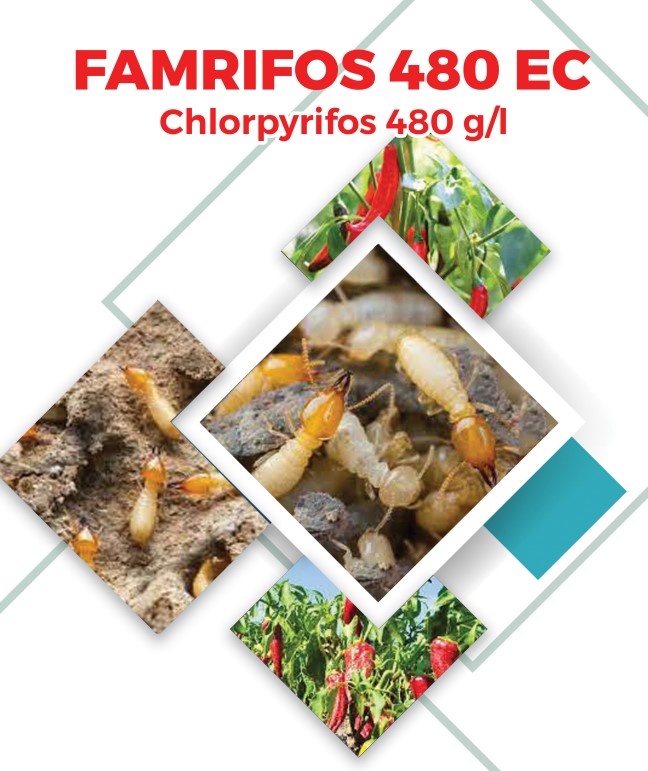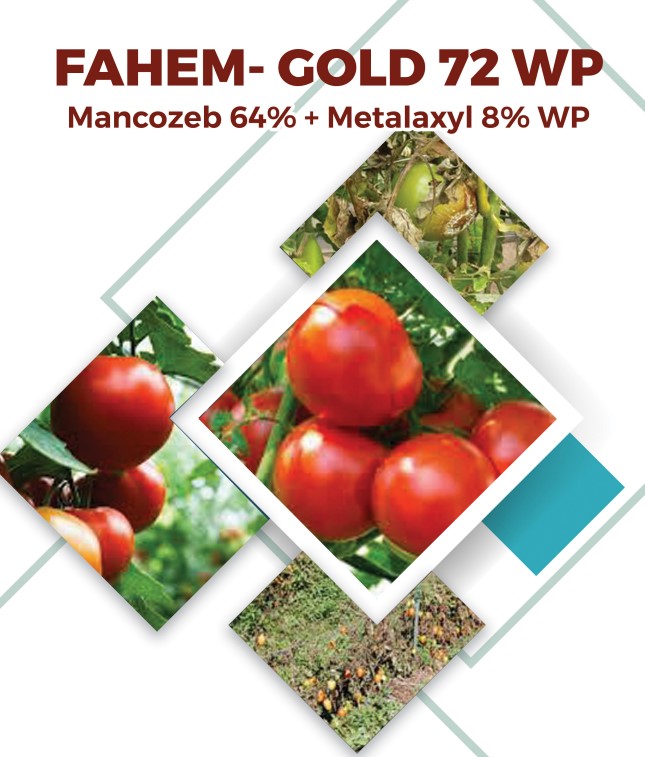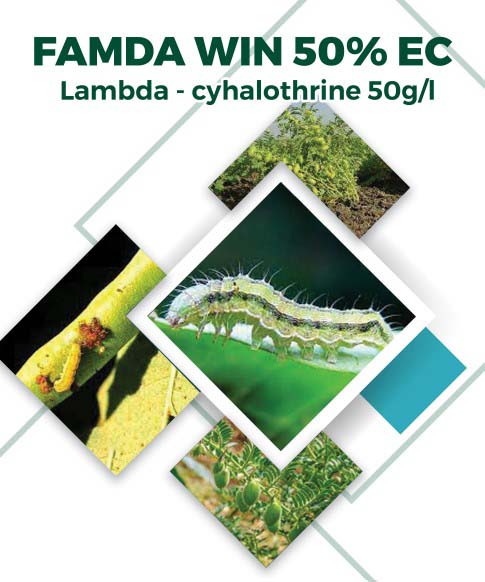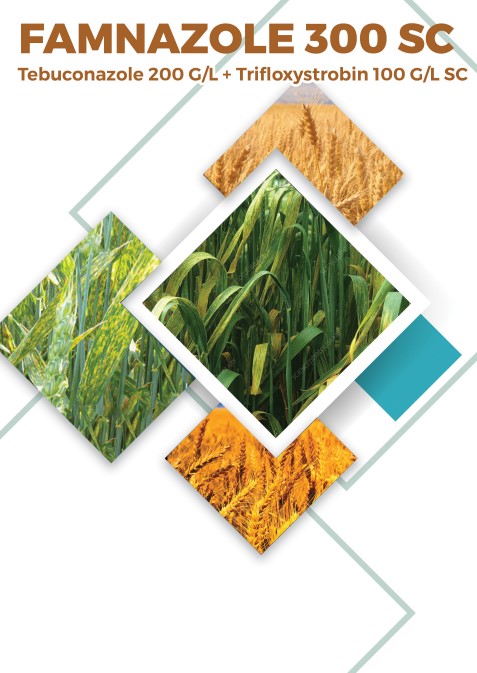Agro Chemicals
This product is an organophosphorus insecticide, which acts on the nervous system of insects and has contact killing, stomach poisoning and certain fumigation effects. For the control of foliar pests, scale insects, aphids on a variety of crops
Evidence of safety to crop (s) Non-phytotoxic to most plant species when used as recommended. Poinsettias, azaleas, camellias, and roses may be injured.
Evidence of safety to non-target organisms For Chlorpyrifos tech:
Effects on birds: Acute oral LD50 for mallard ducks 467, house sparrows 113 mg/kg b.w.
Effects on aquatic organisms: Fish: LC50 (96 h) for rainbow trout 24 μg/l, fathead minnows 0.34 mg/l. Daphnia: LC50 (48 h) 1.8 μg/l Algae: EC50 (72 h) 0.48 mg/l.
Effects on other organisms: Bees: LD50 (48h) 370 ng/bee Worms: LC50 (14 d) 210 mg/kg dry soil.
Computability with other pesticides Materials to avoid: Incompatible with alkaline materials.

This product is a systemic fungicide with protective and therapeutic effects. It mainly inhibits the oxidation of pyruvic acid in bacteria. It can be absorbed by the roots, stems and leaves of plants, and transferred to the plants with the movement of water in the plants. All organs, effective against downy mildew. Mixing metalaxyl with mancozeb can prolong the control period.
Evidence of safety to crop (s) Non-phytotoxic if used as recomendation.
Evidence of safety to non-target organisms For Mancozeb tech
Effects on birds: Acute oral LD50 for mallard ducks >5000, Japanese quail >5000 mg/kg.
Effects on aquatic organisms: Fish: LC50 (96 h) for rainbow trout 24 μg/l, fathead minnows 0.34 mg/l. Daphnia: LC50 (48 h) 1.8 μg/l Algae: EC50 (72 h) 0.48 mg/l.
Effects on aquatic organisms: Fish: LC50 (96 h) for Pimephales promelas 3.89 mg/l, rainbow trout 1.0mg/l. Daphnia: LC50 (48 h) 3.7 mg/l. Algae: LC50 (72 h) 0.044 mg/l
Effects on other organisms: Worms: LC50 (14 d) >1000 mg/kg. Bee: Not toxic to bees. LD50 (48 h) >200 μg/bee
Computability with other pesticides Materials to avoid: Do not mix with strong alkaline substances and copper preparations

This product is a non-systemic high-efficiency pyrethroid insecticide, which has the characteristics of broad insecticidal spectrum and rapid effect. When foliar spraying on crops, it must be diluted with enough water, sprayed evenly, and used in a timely manner
Toxicological information (Acute Oral LD50:) Acute oral toxicity for rat is 1000 mg/kg. (Acute Dermal LD50:) Acute dermal toxicity for rat is >2000 mg/kg (Skin and eye irritancy:) non-irritating to skin; slight irritating to eyes (rabbits). (Inhalation toxicity) if appropriate Acute inhalation toxicity for rat is >2.0 mg/l air.
Evidence of safety to non-target organisms Data for Lambda-cyhalothrin tech: Effects on birds: Acute oral LD50 for mallard ducks >3800 mg/kg
Effects on birds: Acute oral LD50 for mallard ducks >5000, Japanese quail >5000 mg/kg.
Effects on aquatic organisms: Fish: LC50 (96 h) for rainbow trout 24 μg/l, fathead minnows 0.34 mg/l. Daphnia: LC50 (48 h) 1.8 μg/l Algae: EC50 (72 h) 0.48 mg/l.
Effects on aquatic organisms: Fish: LC50 (96 h) for rainbow trout 0.39 μg/l. Daphnia: LC50 of Lambda-cyhalothrin tech to daphnia magna for 48 h is 0.26 μg/L. Algae: EC50 of Lambda-cyhalothrin tech to algae for 96 h is 1.5mg/L. Worms: LC50 (14 d) >1000 mg/kg. Bee: Not toxic to bees. LD50 (48 h) >200 μg/bee
Effects on other organisms: Bees: LD50 of Lambda-cyhalothrin tech to bees at 48 h is 0.94 μg/bee, Worms: LC50 (14 d) of Lambda-cyhalothrin tech to earthworm is >1000 mg/kg
Computability with other pesticides Bees: LD50 of Lambda-cyhalothrin tech to bees at 48 h is 0.94 μg/bee, Worms: LC50 (14 d) of Lambda-cyhalothrin tech to earthworm is >1000 mg/kg

This product is compounded by the oximinoacetate fungicide trifloxystrobin and the triazole fungicide tebuconazole, which has both protective and therapeutic effects. The product has high bactericidal activity, strong systemicity and long lasting effect, and can be used to prevent and control major fungal diseases of various crops
Toxicological information Acute Oral LD50: Acute oral toxicity for female rat is >2000 mg/kg. Acute Dermal LD50: Acute dermal toxicity for rat is >4000 mg/kg Skin and eye irritancy: Non-irritating to skin and slight irritant to eye (Rabbit). Inhalation toxicity (if appropriate): Acute inhalation toxicity for rat is >2.0 mg/l air.
Evidence of safety to crop (s) Good plant compatibility in most crops with any formulation, and achieved in more sensitive crops by appropriate formulations, e.g. WP, WG or SC
Evidence of safety to non-target organisms For Tebuconazole Tech Birds: Acute oral LD50 for Japanese quail 2804, bobwhite quail 1988 mg/kg b.w. Fish: LC50 (96 h) for rainbow trout 4.4, bluegill sunfish 5.7 mg/l. Daphnia: LC50 (48 h) 2.79 mg/l. Algae: ErC50 (72 h) 3.80 mg/l. Bees: LD50 (48 h, oral) >83 μg/bee Worms: Acute LC50 (14 d) for Eisenia foetida 1381 mg/kg dry soil. For Trifloxystrobin Tech Birds: Acute oral LD50 for bobwhite quail >2000, mallard ducks >2000 mg/kg. Fish: LC50 (96 h) for rainbow trout 15.44μg/l. Daphnia: LC50 (48 h) 14.95 μg/l. Algae: EC50 (72 h) 5.3 μg/l Bees: LD50 (oral and contact) >100 μg/bee. Worms: LC50 (14 d) >1000 mg/kg soil
Computability with other pesticides Materials to avoid: Do not mix with strong alkaline substances and copper preparations

Evidence of effectiveness for intended use.
